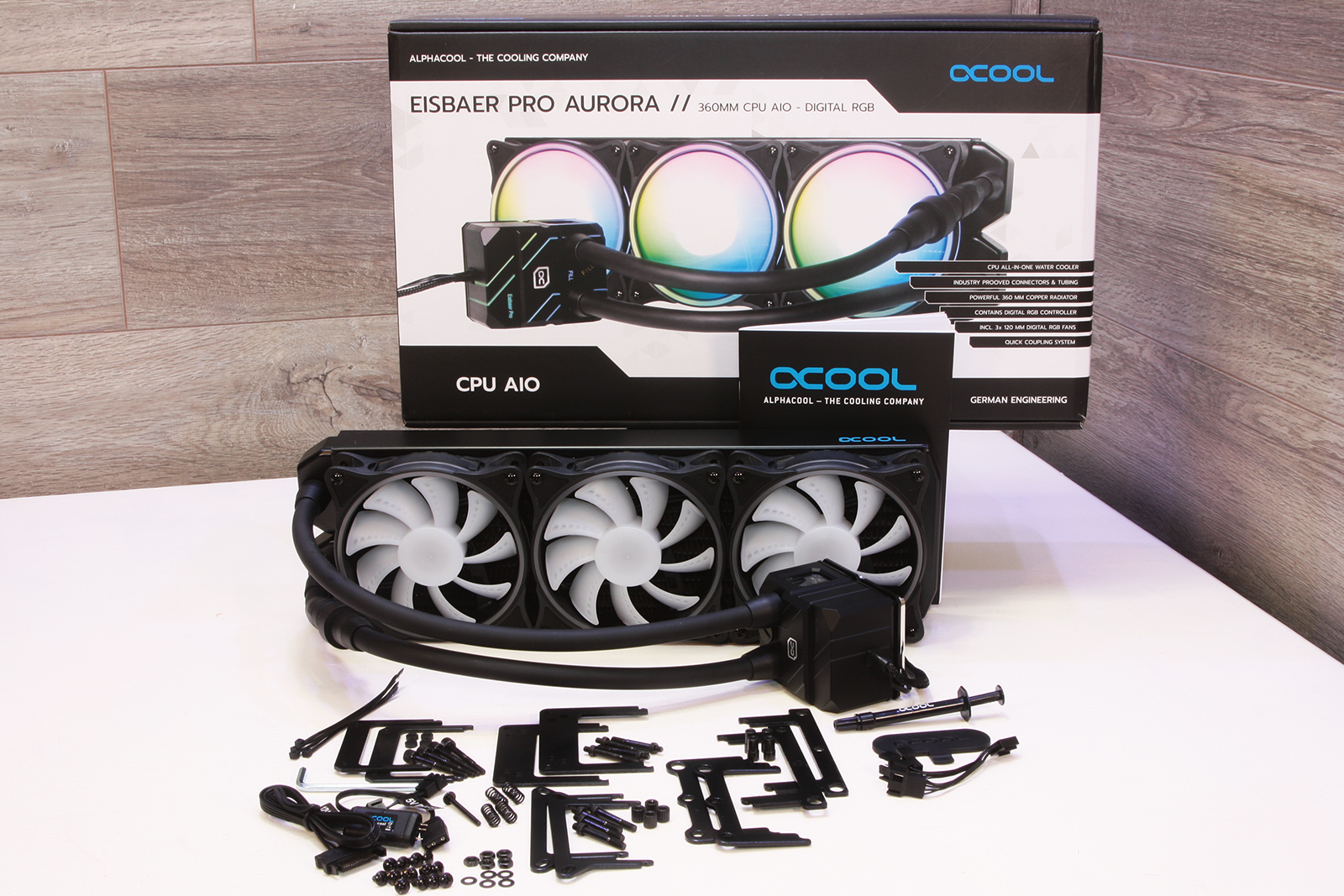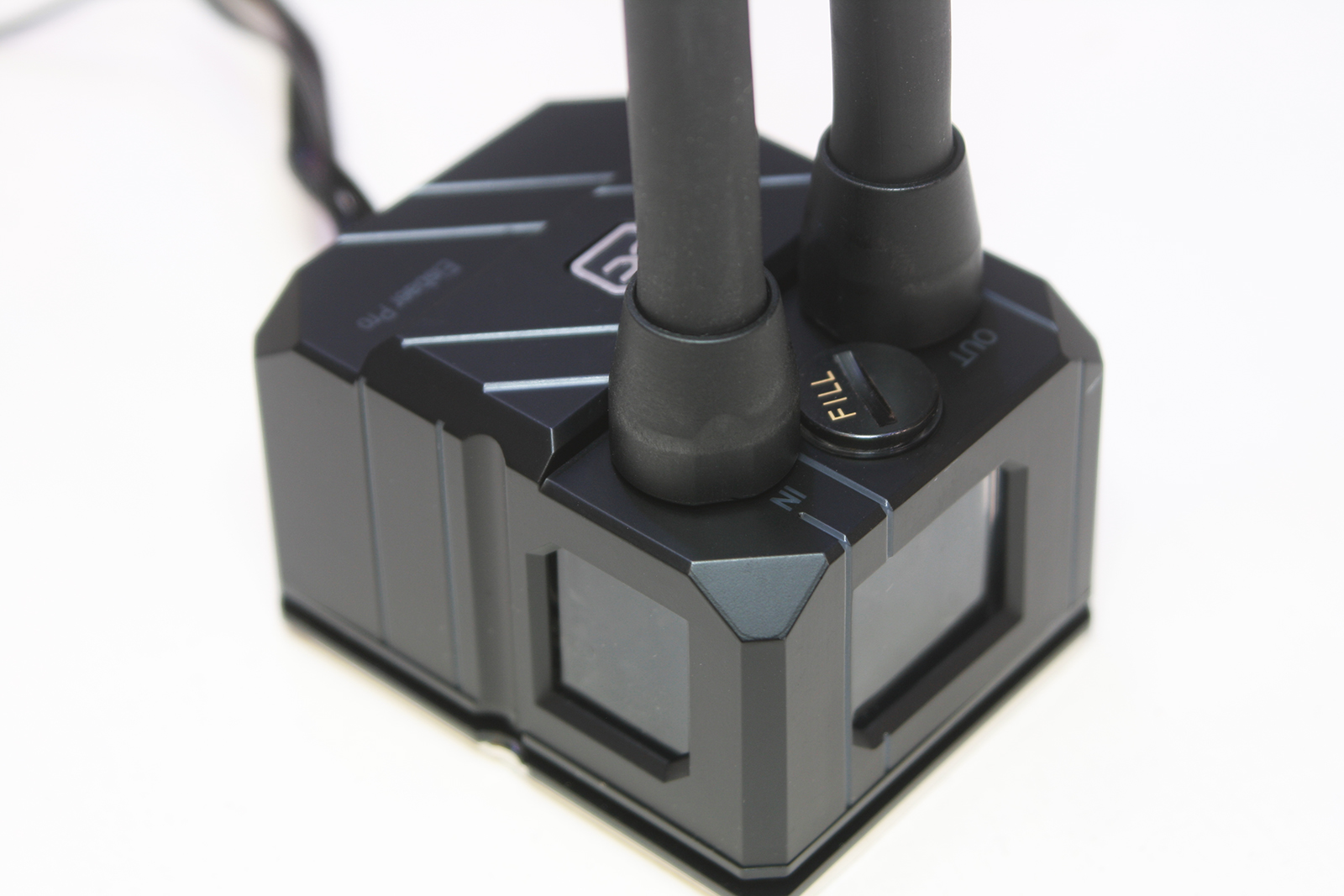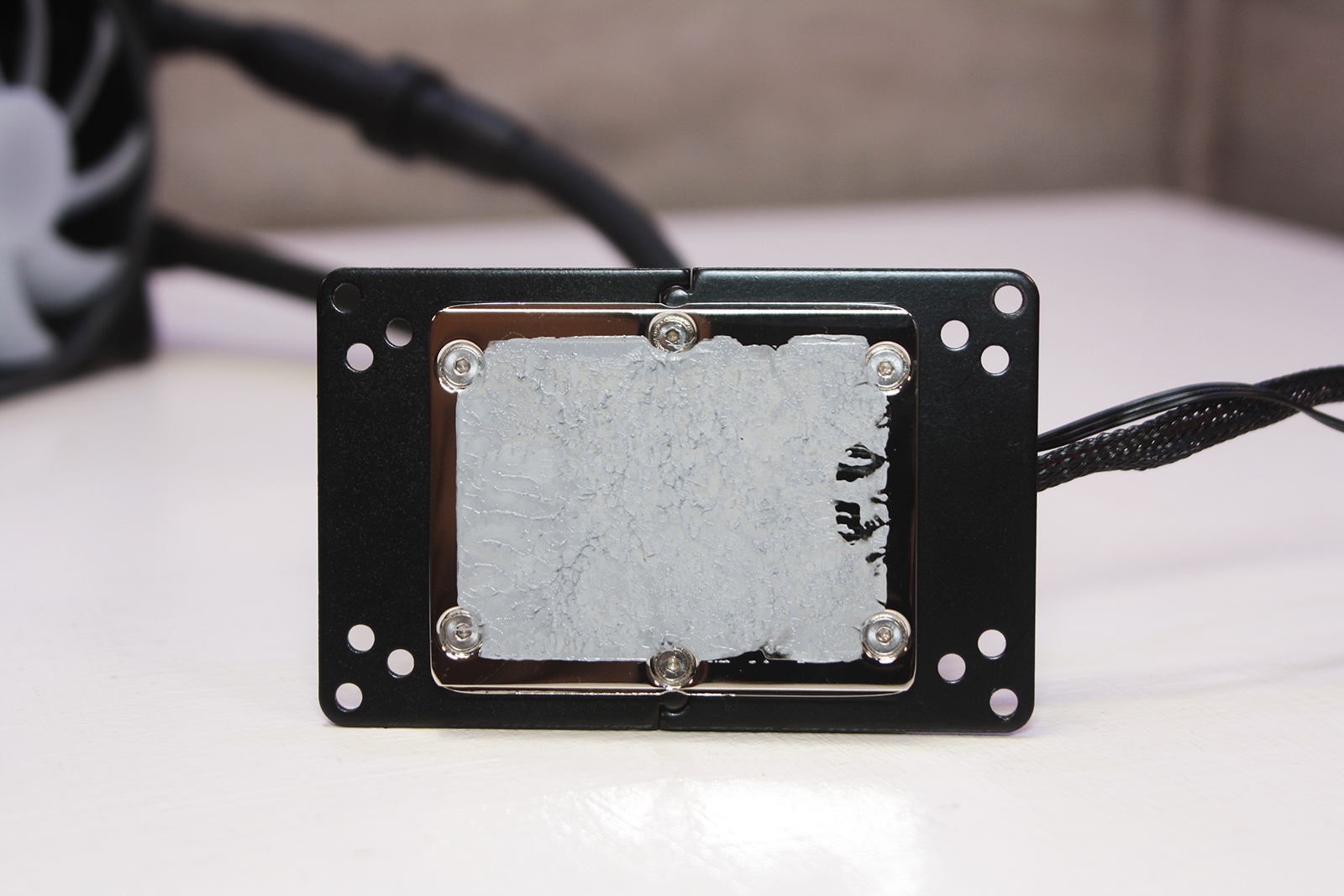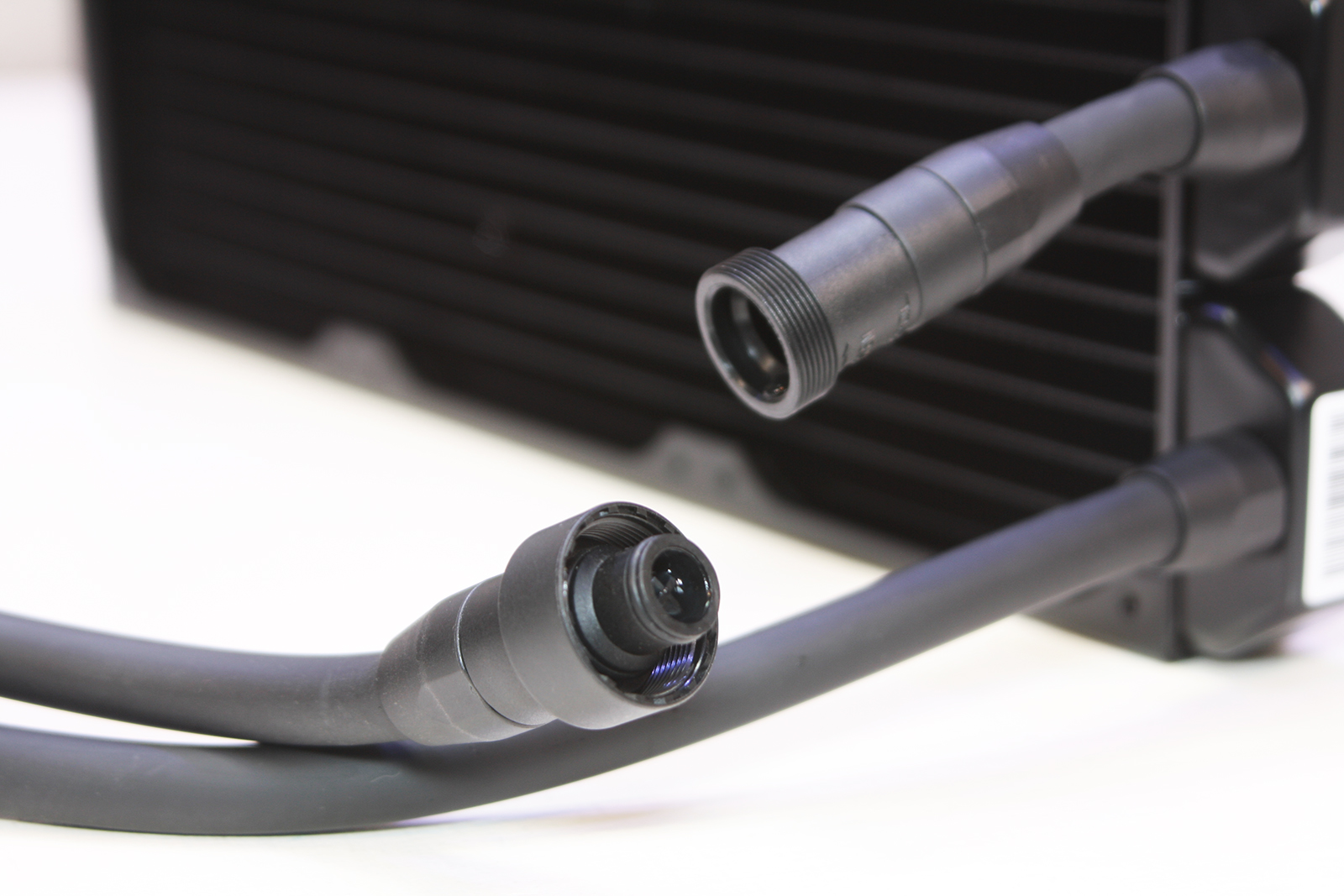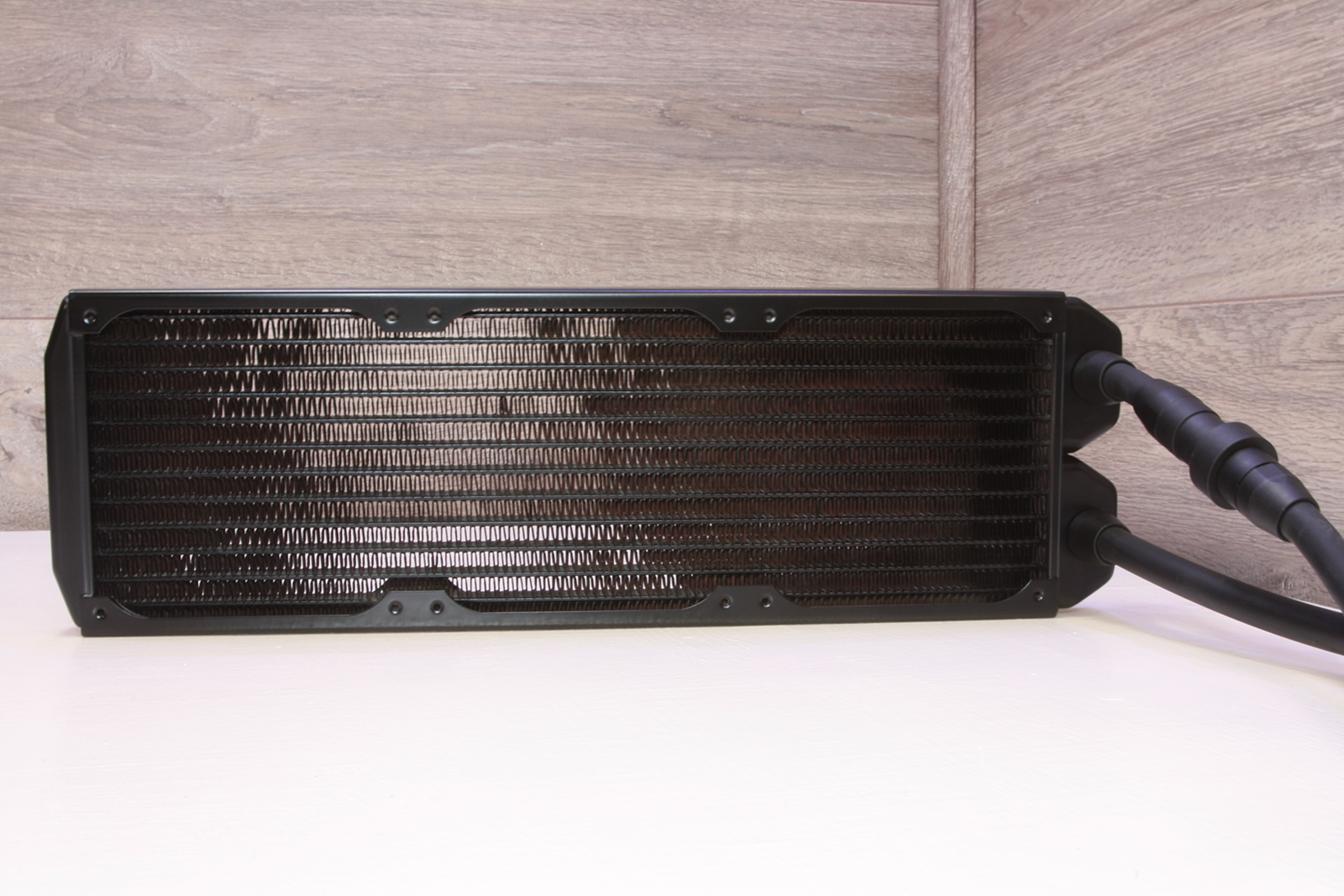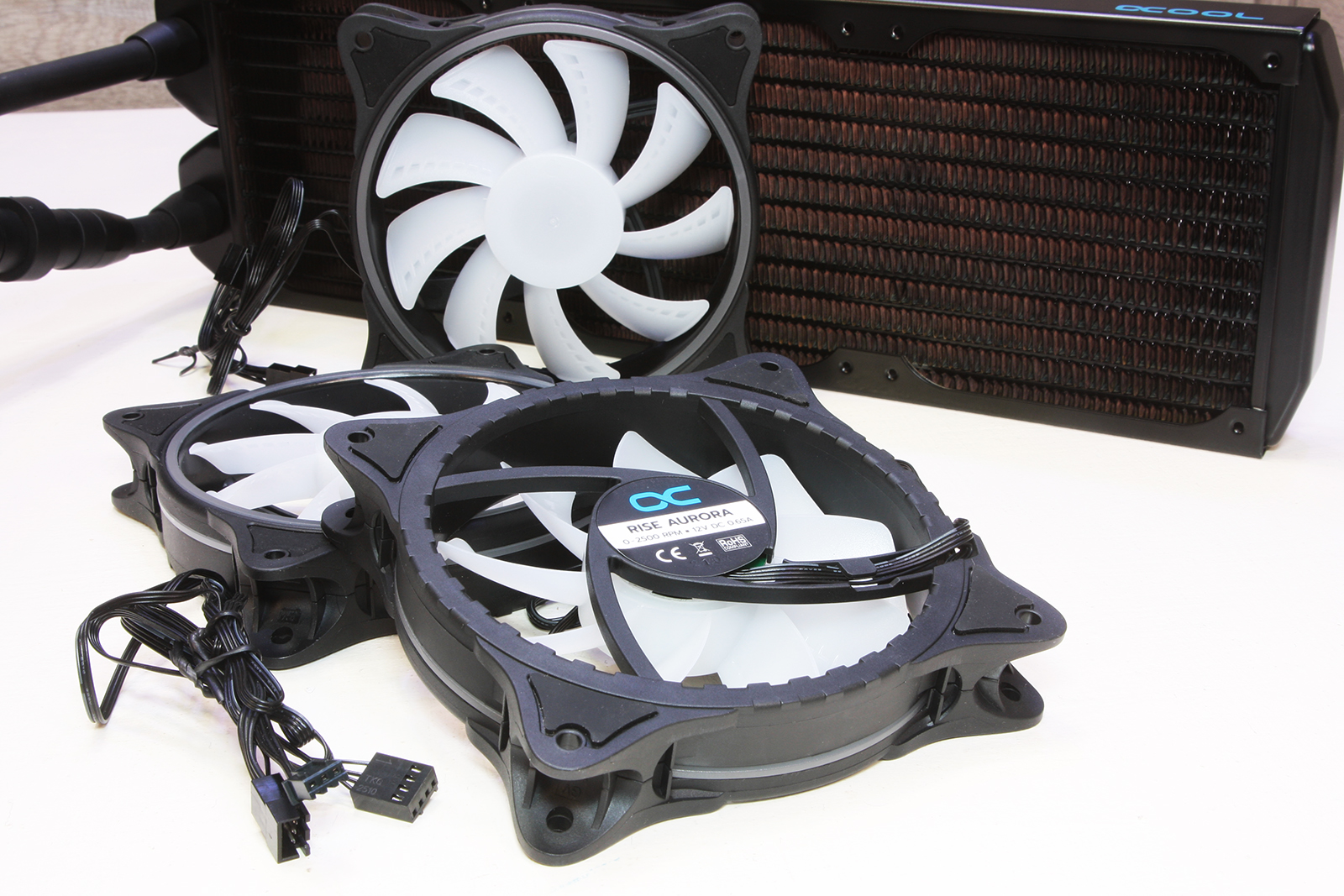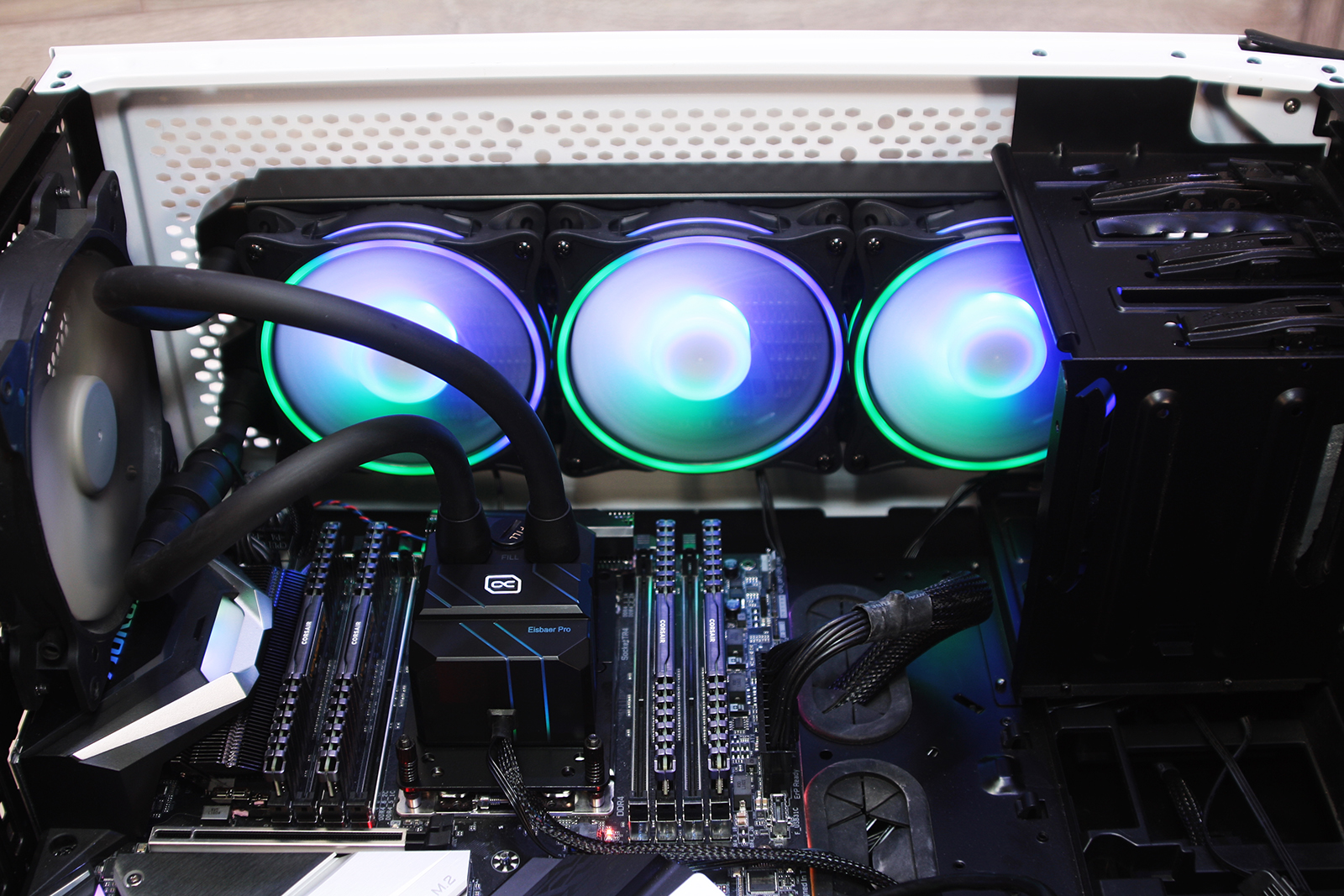Tom's Hardware Verdict
Alphacool’s Eisbaer Pro Aurora 360 is impressive out of the box as an AIO cooler for current HEDT CPUs. While its $217 price is expensive, the company uses standard G1/4 threaded components, allowing the Eisbaer to expand step-by-step toward a full custom-cooled system.
Pros
- +
+ Threadripper cooling performance
- +
+ G1/4 watercooling direct compatible
- +
+ Dripless disconnects for simple expansion using Alphacool components
Cons
- -
Could be quieter
- -
Lacks software controls
Why you can trust Tom's Hardware
The Alphacool Eisbaer Pro Aurora 360 features a full-cover CPU block sizable enough to fully cover Threadripper’s ample surface area, although it supports mainstream sockets like AM4 as well. There’s also a powerful, fast-flowing pump with built-in reservoir and an all-copper radiator, allowing the Eisbaer Pro Aurora 360 to morph into a custom cooling loop, one piece at a time.
Alphacool is often recognized for its contributions and liquid cooling components in the PC watercooling industry. The company prides itself on offering some of the best-flowing, highest-performing blocks and radiators available for the enthusiast market. And as we’ve seen in testing its previous products, the company usually delivers. So it comes as little surprise that Alphacool also builds its AIO line from the same quality components, with expert craftsmanship, to provide cooling solutions like the Eisbaer Pro Aurora 360.
The Alphacool Eisbaer Pro Aurora 360 is the brand’s premium liquid cooling system for AMD and Intel HEDT processors, making use of standard G1/4 threaded watercooling components for true cooling compatibility, including quick-disconnect fittings to allow dripless expansion using other Alphacool QDC options, such as Eiswolf GPU blocks or additional radiators.
Specifications
| Thickness | 1.19" / 30.2 (2.25" / 57.12mm w/fans) |
| Width | 4.88" / 124.0mm |
| Depth | 15.75" / 400mm |
| Pump Height | 2.25" / 57.2mm |
| Speed Controller | BIOS |
| Cooling Fans | (3) 120 x 25mm |
| Connectors | (1) 3-Pin |
| Row 7 - Cell 0 | (3) 4-Pin PWM |
| Row 8 - Cell 0 | (1) SATA |
| Row 9 - Cell 0 | (4) 3-pin aRGB |
| Weight | 69.6 oz / 1974g |
| Intel Sockets | 2011, 2011-v3, 2066, 3647 narrow+square |
| AMD Sockets | AM4, TR4, sTRX4, SP3, sWRX8 |
| Warranty | 2 years |
| Warranty | $217 |
Features
Mounting options for the Alphacool Eisbaer Pro Aurora 360 are focused on high core count workstation and high-end desktop (HEDT) CPUs from both Intel and AMD, given that these chips see higher thermal output and often heavier, sustained utilization. Mounting brackets are paired by socket type and slide around the CPU block in a milled frame rail and snap together to provide a quick method for getting the cooler setup for installation.
An aRGB lighting controller can be used in lieu of motherboards lacking 3-pin (5v) aRGB headers, and a PWM splitter is provided for cable management, while a syringe of Alphacool thermal compound eliminates the need for an added purchase. A tool is also included to allow easy removal of the fill port cap on the pump reservoir housing.
Alphacool covers the Eisbaer Pro Aurora 360 with a 2-year warranty.
The heart of the Eisbaer Pro Aurora is a handsome pump + reservoir, with acrylic windows to view coolant levels. Both in/out fittings are G1/4-threaded parts and come equipped with Alphacool’s enterprise series fittings, but can be swapped out with common G1/4-threaded watercooling fittings for customization or expansion of the cooling loop. The tubing itself is quality TPV rubberized coolant tubing, which is also utilized in the company’s enterprise cooling line.
Get Tom's Hardware's best news and in-depth reviews, straight to your inbox.
A single fill port allows for topping off or refilling when needed.
The base of the Alphacool Eisbaer Pro Aurora sees a copper cooling plate with a nickel-plated mirror finish large enough to fully cover Threadripper CPUs. The pump is managed by a 3-pin fan header, and lighting is accessible via 3-pin (5v) aRGB header.
Making full use of the Eisbaer Pro Aurora cold plate, our Threadripper mount easily spreads thermal paste to the edge of the block itself. Around the perimeter of the block we can see the Threadripper mounting plates, which snap around the milled edge of the pump unit for secure mounting.
The Eisbaer Pro Aurora 360 features a dripless quick disconnect to allow easy expansion of the cooler with other Alphacool products like Eiswolf GPU blocks and additional radiators. The quick disconnects (QDCs) are designed to separate without spillage, although we did see about a drop of coolant which could occur, which according to Alphacool documentation is to be expected. The QDCs promote correct flow direction insert of the add-in Alphacool component, meaning that flow direction will be correct for the component being added due to the distinct male/female side needing an alternate mate to seal against.
Alphacool’s radiators use full-copper tanks, fins and internal tubes, exactly like the company’s performance watercooling components. The cooling fins are given only a slight spray of paint, to prevent the black coating from diminishing the performance of the copper it obscures underneath. The end tanks of the radiator are more pronounced, given that they need to accommodate G1/4 fitting sizes for the inlet/outlet port fittings, rather than the smaller barbs used by AIOs utilizing lesser-quality aluminum radiators. Little (if anything) separates the radiators used on the Eisbaer Pro Aurora from Alphacool’s other custom watercooling radiator lineup.
The trio of included PWM-controlled aRGB(3-pin, 5v) 125mm RISE Aurora fans are rated up to 2000 RPM, although we saw a bit higher output in our testing. Each fan features an opaque blade design, which diffuses color and provides more of a glowing effect as well as showcasing lighting effects along the exposed acrylic ring, allowing color distribution around the majority of the fan housing from the LED lighting pattern. Rubberized mounting pads help eliminate fan noise at higher rotational speeds.
We encountered zero difficulty getting the Eisbaer Pro Aurora 360 installed on our 32-core 2990WX Threadripper CPU. In fact if anything, the tolerances for the mounting hardware are so precise, they made block alignment over the standoffs nothing more of an exercise in exact positioning, leaving nothing to question.
Assuming your chassis has enough room to house a 360mm radiator, the Eisbaer Pro Aurora 360 shouldn’t have much of an issue installing into a case supporting such a large radiator, although the end tanks on the Eisbaer Pro Aurora are somewhat larger than a typical aluminum AIO radiator, giving it a slightly longer profile.

Garrett Carver is a contributor for Tom’s Hardware, primarily covering thermal compound comparisons and CPU cooling reviews; both air and liquid, including multiple variations of each.
-
pixelpusher220 Maybe it's me, but does the 'fill port' being directly on top of the CPU make anyone else a wee bit nervous?Reply
Happily admit I've not done any water cooling, but I assumed filling would happen at the reservoir and/or that the reservoir wouldn't sit directly on the CPU. -
rubix_1011 I've watercooled for 19+ years and the reality is that care and patience should always be the utmost priority. If coolant drips or spills, it isn't the end of the world, clean up the spill and ensure that components are 100% dried before ever attempting to turn a system on. Using canned air, paper towels, cotton swabs and even hair dryers and fans help out. I would avoid excessive heat like from ovens or things of that nature.Reply
You could technically submerge your entire PC in water and as long as it dries completely before power is switched on, you should not see any issue. I've had people tell me their computer had been rained on (window left open) and it was shot. Let it dry out over several days, monitor and system were each fine once water was gone. -
pixelpusher220 Reply
Appreciate the reply! I think my brain was thinking you'd be 'topping up' but now that seems like not the most common use case.rubix_1011 said:I've watercooled for 19+ years and the reality is that care and patience should always be the utmost priority. If coolant drips or spills, it isn't the end of the world, clean up the spill and ensure that components are 100% dried before ever attempting to turn a system on. Using canned air, paper towels, cotton swabs and even hair dryers and fans help out. I would avoid excessive heat like from ovens or things of that nature.
You could technically submerge your entire PC in water and as long as it dries completely before power is switched on, you should not see any issue. I've had people tell me their computer had been rained on (window left open) and it was shot. Let it dry out over several days, monitor and system were each fine once water was gone.
I also now imagine that rather than filling the system with it 'installed', you'd fill this prior to installation of the cpu/heatsink/reservoir? I guess the movements involved in installation aren't enough to dislodge the tubing (with or without this systems 'dripless' concept). -
rubix_1011 Correct, just taking it out of the box and installing it does not require fluid addition or filling. This would only be when expanding the system with additional components and you'd need to top off the system to allow the loop to be as full as possible with coolant. When it comes to liquid cooling PC components, you certainly do not want the pumps to run dry or be low on coolant as this can cause permanent damage.Reply
